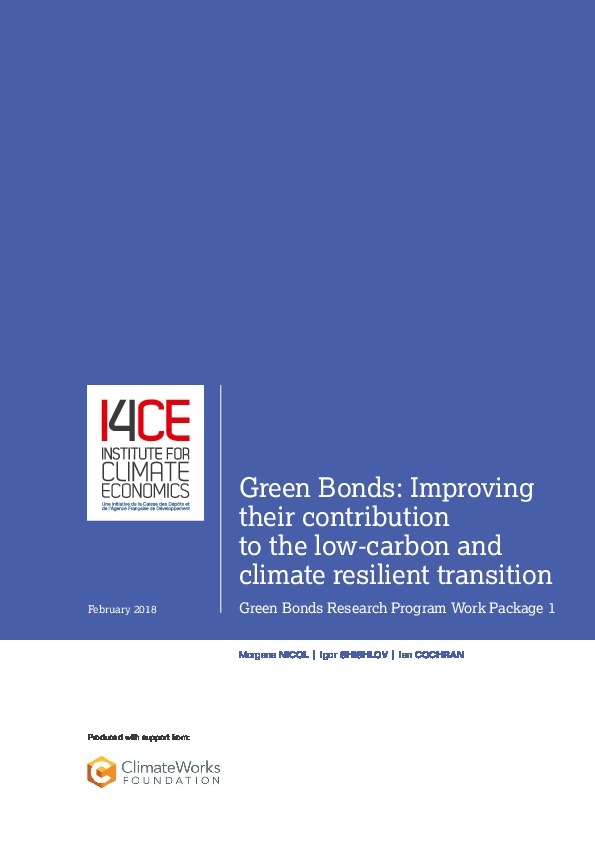Green Bonds: Improving their contribution to the low-carbon and climate resilient transition
To achieve the Paris Agreement’s objective of limiting the rise of global mean temperature to +2°C compared to the preindustrial period, a shift in the allocation of private finance flows from carbon-intensive activities to investments compatible with a 2°C pathway will be necessary. Given the often high expectations around bonds, it is thus important to understand the role that this financial instrument can play in financing low-carbon, climate resilient
(LCCR) investments, and how the green bond market can help bonds contribute to directing additional flows towards LCCR assets.
This report looks at the challenges and opportunities to ensure financial additionality of the green bond market – and consists of three parts. The first part explores what categories of low-carbon, climate-resilient investment needs could theoretically be financed by bonds and where main financing gaps are lying. Second, the report analyses if the labelled green bond market could contribute in directing additional bond financing to LCCR investments in the
future. Third, the report suggests and briefly analyzes some market-led and public-led measures that could help boost the contribution of the green bond market to the financing of the low-carbon transition. The different policies options are described and analyzed in varying detail in the report’s annexes.
This report transparently assumes that the overall objective of developing the green bond market is to support the LCCR transition, and thus to bring additional benefits to LCCR assets compared to non-labelled climate-aligned bonds. Rather than only analyzing what measures could help accelerate the development of the green bond market, this study assesses how the development of the labelled green bond market could contribute in “shifting the trillions” and aligning financial flows with the objectives of the Paris Agreement as per its Article 2.1.c. It finally draws conclusions that could be applicable for other green instruments and provides a brief overview of how public policy might push for a better ‘mainstreaming’ of climate issues into financial decision-making.
This research program was supported by the Climate Works Foundation.
The full report and the executive summary for both reports are available below.
The results of WP2 are availabile here: Report 2. Environmental integrity of green bonds: stakes, status and next steps.
